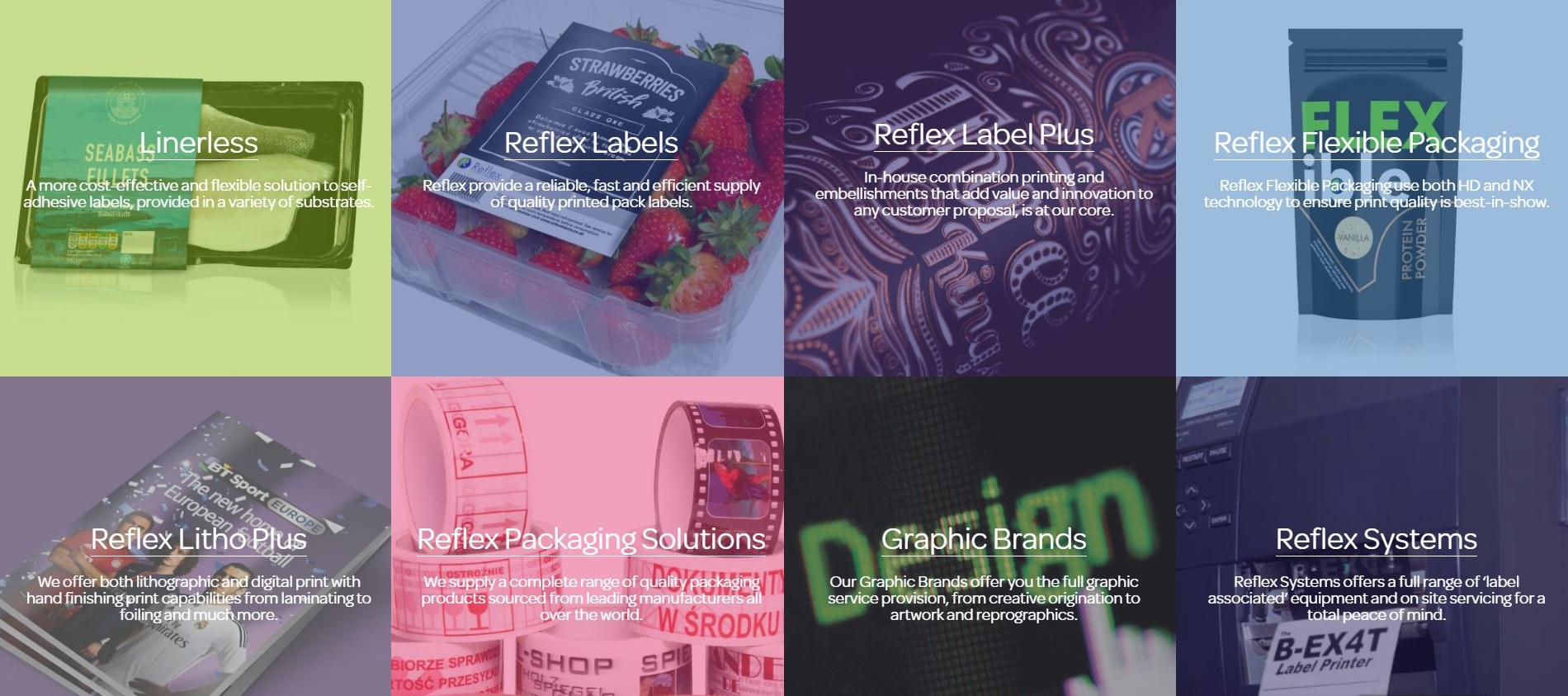Reflex Labels has seen spectacular savings in energy usage with the implementation of a new UV curing system, Andy Thomas reports.
With six label manufacturing sites across the UK, Reflex Labels is one of Europe’s biggest label converting groups. The company supplies a diverse range of customers including the food, household and beauty sectors and has grown rapidly in its 10-year history, now turning over around £50m annually.
Reflex attributes its success to challenging every process that is used in the industry and taking a fresh approach which incorporates a commitment to quality standards and environmentally sustainable business practices. Operations manager at the Mansfield site, Dave Garton, explains that the all of the company’s electricity comes from green, carbon-neutral sources and their UV inks are free from environmentally harmful chemicals such as benzophenone and ITX3.
‘Supermarkets are constantly under scrutiny from consumers and pressure groups alike, with issues such as carbon footprints and recyclability under the microscope. As a result, they turn to their supply chain for more environmentally friendly labeling and packaging solutions to avoid bad press and ensure continued growth,’ says Garton. ‘As well as being good for the environment, sustainable practices are also good for business. Operating in a more environmentally esponsible manner not only reduces our overheads but is also crucial for gaining and maintaining business with our customers.
’ For Reflex, sustainability reaches as far as ordering ‘range extending’ electric cars for the company fleet and a zero-tolandfill policy.
Energy requirements
At the heart of the issue is energy use, which for the Mansfield site had become a bottleneck on production capacity as successive press installations had put them on the limit of their available electricity supply.
‘We had been looking to invest in a new power substation in order to make way for the additional presses that we need in future. At the same time, we were also looking at a major investment in the existing presses, some of whose UV systems were around 10 years old and needed to be replaced with a future-proof solution,’ says Garton.
‘That was when GEW first introduced the E2C low-energy UV system that they were working on, promising big cuts in energy use and increased curing power. Early tests indicated that energy use could be reduced substantially over other UV systems, and we were also encouraged by GEW’s more robust approach to the system’s design and manufacture. The E2C offered substantial improvements across the board, including power supply, lamp and reflector technology.’
After the first installation had bedded down, Garton says his team was ‘stunned’ at the results. ‘We measured a reduction from 154 Amps per phase to just 64, while increasing the press’ speed by 17 percent. Overall, we are using 59 percent less energy to cure. Off the back of these savings, we installed a new Mark Andy 2200 press and are still below the capacity of our original electrical supply, so the new press is effectively being run at zero net cost, energy wise. A further two machines have been upgraded with E2C to free up additional electrical capacity and make way for further expansion in future.’
Reflex notes that the E2C also increased uptime on the machine as much less maintenance is required. The reflectors are cooled from the rear instead of the front, which virtually eliminates airborne contaminants being drawn over the system’s optical components.
Reduced downtime for Reflex Labels
While other UV systems require regular cleaning to maintain peak operating efficiency, this procedure is rarely necessary with E2C, says Dave Garton. In addition the system’s very high energy efficiency means that minimal lamp power is needed to run the press, resulting in significantly prolonged lamp life. ‘Downtime has fallen through the floor and there has been a big reduction in the need for spare parts and maintenance intervention,’ enthuses Garton. ‘We are seeing lamp life of over 2,700 hours with no edge curing problems – quite simply, if it runs at lower power, everything lasts longer.’ Using low-energy lamps also decreases the amount of heat radiation onto the substrate, which is further reduced by actively air-cooled reflectors. A wider range of heat sensitive materials have been processed successfully with the E2C system, including thin PEs and PETs. ‘The E2C lamps have also raised the confidence of the press operators to run the machines faster. Additionally, with seven machines on the floor and demand for further expansion, the compact footprint of the system is another win,’ says Garton. A key strategy at Reflex Labels is to roll out improvements tested at one site across the whole group. The new UV curing technology is consistent with the group’s sustainable operations policy and looks set to become a standard across all production sites.

